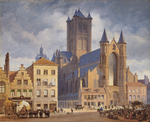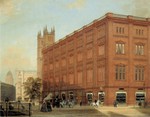Featured Artist at the e.Gallery: Nicolas Poussin

|
Featured Artist at the e.Gallery this week is a 17th Century artist of the Baroque movement, Nicolas Poussin [French, 1594-1665] Link: https://fineart.elib.com/fineart.php?dir=Alphabetical/Poussin_Nicolas Nicolas Poussin (born 1594 Les Andelys, France, died 1665 Rome), was a French painter. “Something celestial shone in his eyes; his pointed nose and wide brow ennobled his modest face.” So wrote a biographer about Nicolas Poussin, a philosopher who expressed himself in paint. Pointing to his forehead, Gian Lorenzo Bernini called Poussin “a painter who works up here.” Born to Norman peasants, Poussin went to Paris in 1612, working with Mannerist artists and collaborating with Philippe de Champaigne. In Rome by 1624, he worked in Domenichino’s studio, absorbing his composition and cool colors. Poussin’s art developed slowly. His first major commission, an altarpiece for Saint Peter’s Basilica, was unsuccessful; in fact, he never painted again for a public building in Rome but concentrated on small pictures for collectors. In 1640 Louis XIII persuaded him to supervise a large decorative project in Paris, but Poussin soon returned to Rome, suited neither for large projects nor for court intrigue and competition. He usually painted what he chose, on speculation rather than commission, a practice that led to reputation, not riches. Despite weak, shaky hands — which plagued him as early as 1643 and were probably a symptom of syphilis — Poussin painted by himself, lacking the resources required to run a large workshop with assistants and apprentices. His pictures, rather than pupils, shaped European art for generations. Poussin was the chief formulator of the French classical tradition in painting. By the mid-1630s, he began exploring a serene, classical style inspired by Raphael and antiquity, emphasizing form and moral content. His late works are essays in solid geometry, with movement minimized and every element given a symbolic meaning and pictorial function. |
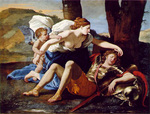 Rinaldo and Armida |
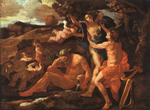 Apollo and Daphne |
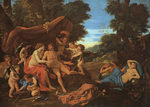 Mars and Venus |
 The Rape of the Sabine Women (detail) |





